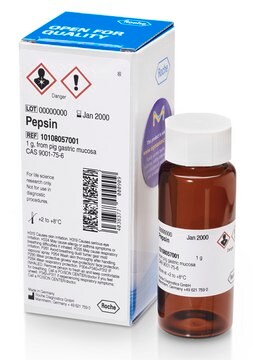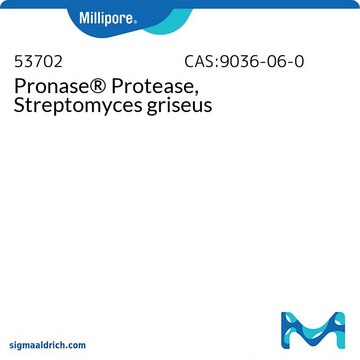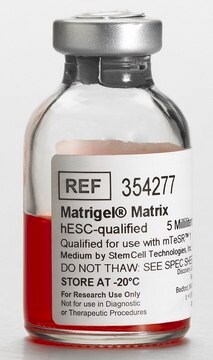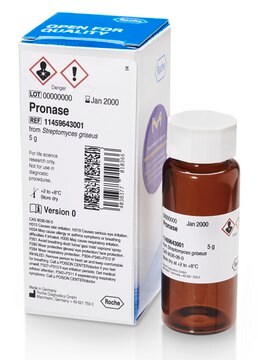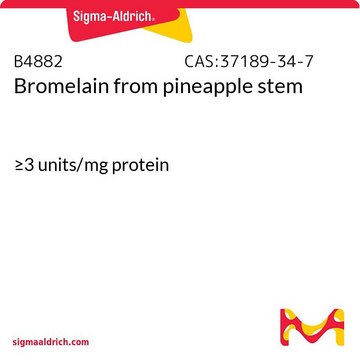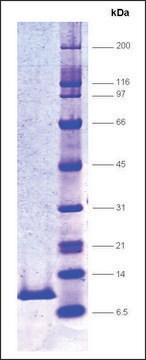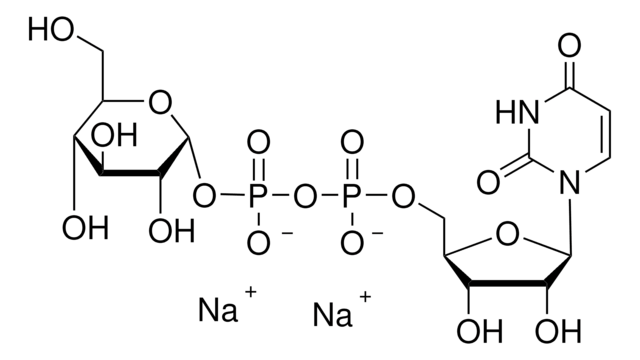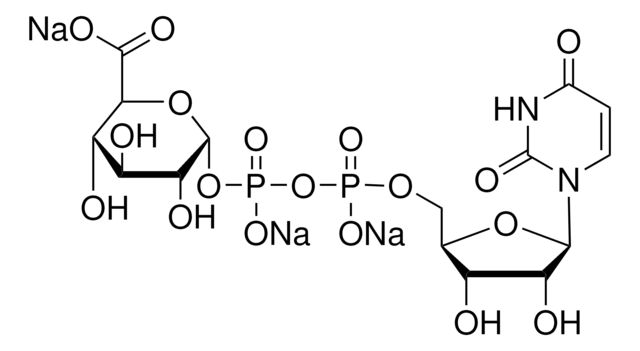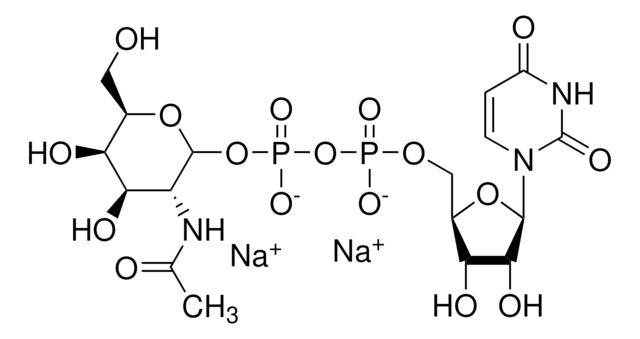D3321
Dipeptidyl Peptidase VII human
recombinant, expressed in Sf9 cells
Synonyme(s) :
DPP7, Quiescent cell proline dipeptidase
About This Item
Produits recommandés
Produit recombinant
expressed in Sf9 cells
Niveau de qualité
Forme
solution
Activité spécifique
≥1,500 units/μg protein
≥1500 units/μg protein
Poids mol.
89.1 kDa
Maladie(s) pertinente(s)
diabetes; cardiovascular diseases
Conditions d'expédition
dry ice
Température de stockage
−70°C
Catégories apparentées
1 of 4
Cet article | U6751 | U5252 | U4125 |
|---|---|---|---|
| biological source Saccharomyces cerevisiae | biological source bovine liver, rabbit muscle, yeast | biological source synthetic (organic) | biological source - |
| form powder | form powder | form powder | form - |
| assay ≥98.0% (HPLC) | assay 98-100% | assay ≥97% | assay 95-100% |
| solubility H2O: 50 mg/mL, clear | solubility - | solubility - | solubility H2O: soluble 100 mg/mL, clear, colorless to very faintly yellow |
| storage temp. −20°C | storage temp. −20°C | storage temp. −20°C | storage temp. −20°C |
| impurities ≤5% solvent, ≤8.5% water | impurities - | impurities - | impurities - |
Application
Actions biochimiques/physiologiques
Propriétés physiques
Définition de l'unité
Forme physique
Mention d'avertissement
Danger
Mentions de danger
Classification des risques
Eye Dam. 1 - Repr. 1B - Skin Corr. 1C
Code de la classe de stockage
6.1C - Combustible acute toxic Cat.3 / toxic compounds or compounds which causing chronic effects
Classe de danger pour l'eau (WGK)
WGK 2
Listes réglementaires
Les listes réglementaires sont principalement fournies pour les produits chimiques. Seules des informations limitées peuvent être fournies ici pour les produits non chimiques. L'absence d'indication signifie qu'aucun des composants n'est répertorié. Il incombe à l'utilisateur de s'assurer de l'utilisation sûre et légale du produit.
EU REACH Annex XVII (Restriction List)
Faites votre choix parmi les versions les plus récentes :
Certificats d'analyse (COA)
Vous ne trouvez pas la bonne version ?
Si vous avez besoin d'une version particulière, vous pouvez rechercher un certificat spécifique par le numéro de lot.
Déjà en possession de ce produit ?
Retrouvez la documentation relative aux produits que vous avez récemment achetés dans la Bibliothèque de documents.
Notre équipe de scientifiques dispose d'une expérience dans tous les secteurs de la recherche, notamment en sciences de la vie, science des matériaux, synthèse chimique, chromatographie, analyse et dans de nombreux autres domaines..
Contacter notre Service technique

